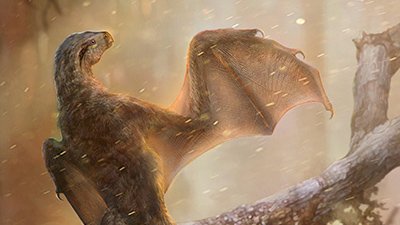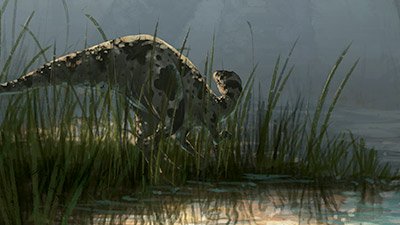On the horns of a dilemma?
How do creationists respond to evolutionists who tout “evolution actually works” with the newest dinosaur find?
AiG supporters around the world have been flooding our general email inbox with links to various news stories concerning the discovery of a new type of dinosaur. The most common link we’re being sent is of an Associated Press article, which includes a quote from a paleontologist who has declared that this creature—claimed to be an evolutionary intermediate between older forms of dinosaurs with large horns and their later small–horned relatives—shows that: “Lo and behold, evolutionary theory actually works.”1
This newly uncovered dinosaur, Albertaceratops nesmoi, had horns about three–feet long (located right above its eyebrows). In the evolutionists’ timeline, dinosaurs that were 12 million years older than this one had larger horns, and the ones that followed had smaller horns. Hence, evolutionists say, this creature represents a middle step.
So, what have they really found? Well, this is a dinosaur that is in the same family of already-discovered dinosaurs, yet possesses a difference in thickness and size of its horns. But because of the pre-supposed evolutionary dates involving millions of years, this latest find is considered to be an intermediate in an evolutionary sequence.
As a comparison, we would ask: what would evolutionists say about today’s many cattle varieties with their different horn lengths and thicknesses if they were to be found as fossils in the ground, but which they dated to be millions of years apart?
This is a good reminder of what we have been saying for some time (and which we will present in our soon-to-open Creation Museum): creationists and evolutionists have all the same facts (in this case, fossils), but interpret the facts differently. Why? Because of our different starting points.
The evolutionary “progress” in this case involves the eventual loss of the horns or at least reduction in the size of the horns. It would be more consistent with the evolution belief if dinosaurs were gaining something over time.
Dr. David Menton (who holds a PhD in biology from Brown University) declared that a “prediction” that presumes to show that this evolutionary speculation is really “scientific” fails because “it is at best trivial, for it has been known for a long time that the ceratopsidae dinosaurs show a variety of horn lengths, including a lack of horns.” He added that some evolutionists have suggested that the many “species” now known to have existed could represent variants within one or a few species. Dr. Menton also observed: “Furthermore, it is yet unknown how males and females might have varied, or even how horn length might have varied with age.”
And what is Dr. Menton’s conclusion about this dinosaur and other similar claims? He states: “The evidence for evolution always looks much worse when examined critically and in detail.”
If we start with the Bible, we would expect to find “kinds” of animals and plants possessing great variation within each kind. This is something we observe today, and that is how creationists would interpret these particular dinosaurs and their somewhat different horns. However, if we start with an acceptance of Darwinian evolution (and its accompanying old-ages), we will interpret dinosaurs and their horns within an evolutionary sequence.
Dinosaurs with these type of horns are obviously from the same family—and are easily recognized as such. So, this discovery does not represent any evidence for molecules-to-man evolution, but simply shows variation within the biblical kind. Because there is no evidence of brand-new information in the genes of dinosaurs resulting in a new characteristic in the creature, this is no evolutionary transition.
Now, creationists need to be careful and not say much more at this point, for the detailed scientific papers on this dinosaur find have not been released. Right now, we are commenting on news reports that don’t necessarily offer a full picture of the dinosaur (and sometimes the press can present inaccurate information, especially when it comes to scientific topics). See the sidebar to the right for Dr. Menton’s preliminary views on the find.
Footnotes
- As quoted in an Associated Press/ABC News story at http://abcnews.go.com/Technology/wireStory?id=2921625.
Recommended Resources

Answers in Genesis is an apologetics ministry, dedicated to helping Christians defend their faith and proclaim the good news of Jesus Christ.
- Customer Service 800.778.3390
- Available Monday–Friday | 9 AM–5 PM ET
- © 2025 Answers in Genesis







